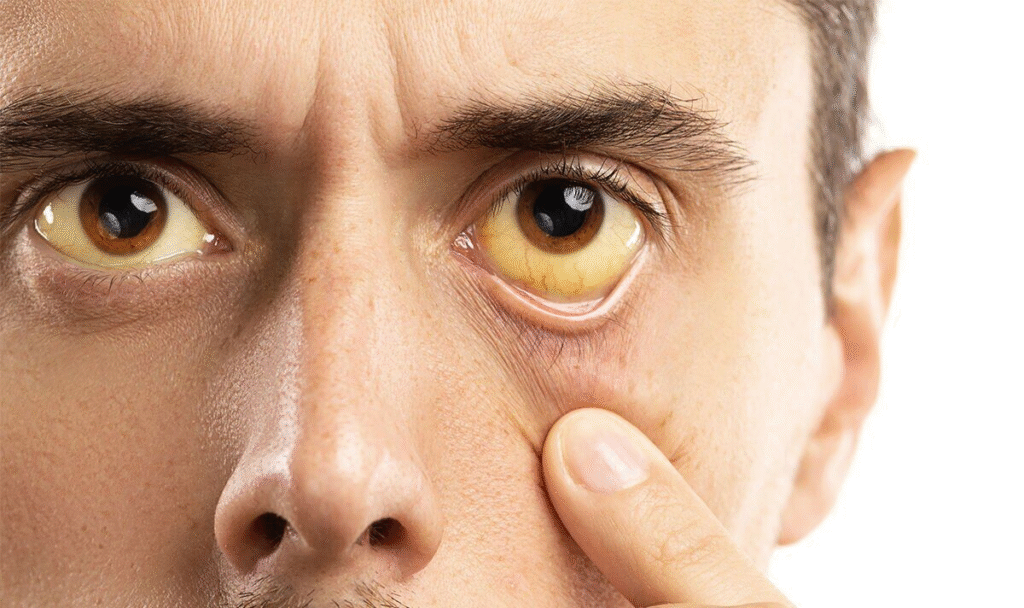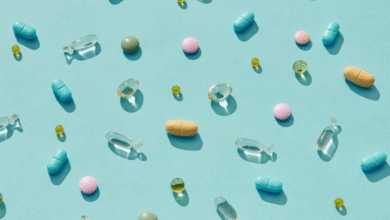Eyes and Nutritional Deficiency , Warning Signs You Shouldn’t Ignore

Have you ever looked in the mirror and noticed your eyes seemed tired or slightly off? Perhaps they appeared yellowish, irritated, or bloodshot. These may seem like minor cosmetic issues, but in reality, they can be critical warning signs that your body is lacking key nutrients.
In this article, we’ll explore how nutritional deficiencies manifest through the eyes, what different eye symptoms may indicate, and what dietary changes you can make to protect both your vision and overall health.
1. Yellowing Eyes (Jaundice): Gallbladder or Liver Trouble
One of the most visible signs of internal dysfunction is yellowing in the whites of the eyes, a condition commonly referred to as jaundice.
Jaundice occurs when there’s a buildup of bilirubin, a yellow pigment formed when red blood cells break down. This usually signals issues in the liver, gallbladder, or bile ducts, such as:
- Blockage of the bile duct
- Gallstones
- Liver inflammation (hepatitis)
- Fatty liver disease
If you notice even mild yellowing, it’s crucial to consult a healthcare professional immediately for liver function testing and further evaluation.
2. Bloodshot Eyes and Vitamin B2 (Riboflavin) Deficiency
Persistent red or bloodshot eyes could be a sign of a Vitamin B2 deficiency. Also known as riboflavin, this vitamin plays a major role in:
- Energy production
- Antioxidant defense
- Eye and skin health
A lack of B2 can lead to blood vessel dilation in the eyes, making them appear red or irritated. One common dietary cause is excess consumption of refined legumes and grains, such as:
- White bread
- Pasta made from white flour
- Processed cereals
These refined carbs have been stripped of their natural vitamins, including riboflavin, during processing.
3. Refined Legumes: The Silent Nutrient Depleters
Refined legumes and grains might taste good, but they do little for your nutritional status. Replacing them with whole grains can provide you with:
- B vitamins (including B2)
- Fiber for digestion
- Antioxidants that protect your cells
Examples of better alternatives:
- Brown rice instead of white rice
- Whole grain bread over white bread
- Quinoa and oats instead of sugary cereals
A whole food diet ensures you’re not only avoiding deficiencies but also supporting your gut and heart health.
4. Fat Deposits Around the Eyes: A Cholesterol Alert
Noticing yellowish bumps or deposits around your eyelids? These may be xanthelasma, cholesterol-rich plaques that develop due to elevated LDL cholesterol levels (often known as “bad” cholesterol).
Although generally painless, these deposits are a strong visual indicator of:
- High blood fat levels
- Poor dietary fat quality
- Increased cardiovascular risk
How to manage it:
- Reduce saturated and trans fats
- Increase omega-3 intake (from salmon, chia seeds, flaxseeds)
- Use healthy oils like olive oil instead of vegetable oils
- Include supplements like choline, lecithin, and niacin—all of which have shown promise in lowering LDL naturally
5. Sugar and Vitamin B1 (Thiamine) Deficiency
Excessive sugar consumption doesn’t just cause weight gain; it can deplete your body’s stores of Vitamin B1 (thiamine). Thiamine plays a critical role in:
- Nerve function
- Glucose metabolism
- Muscle activity
Signs of B1 deficiency related to the eyes may include:
- Eye fatigue
- Redness
- Sensitivity to light
If you frequently consume processed sweets, sweetened beverages, and white flour products, your B1 levels could be compromised.
Good sources of B1 include:
- Lentils
- Sunflower seeds
- Asparagus
- Eggs
Also, conditions like diabetes, chronic stress, or even alcohol consumption can further lower thiamine levels.
6. Recurrent Styes (Eye Boils): Could Be Blood Sugar Imbalance
Styes (or eyelid pimples) are painful, red lumps that appear on the edge of your eyelids. If you get them frequently, it might signal unstable blood sugar levels.
Conditions like prediabetes or insulin resistance can affect the immune system, making you more prone to minor infections such as styes.
To reduce recurrence:
- Cut back on refined sugar and high-glycemic foods
- Increase your intake of protein and fiber
- Stabilize blood sugar levels with complex carbs like oats, quinoa, and beans
7. Eye Twitching: A Signal from Your Nervous System
Eye twitching, though common and usually harmless, may sometimes signal mineral or vitamin deficiencies—especially:
- Magnesium (nerve function)
- Calcium (muscle control)
- Vitamin B12 (neurological health)
Chronic twitching or spasms should not be ignored. A balanced diet with plenty of leafy greens, nuts, and B-complex vitamins may resolve the issue.
8. Gritty or Irritated Eyes: Could Indicate Dehydration or Nutrient Gaps
A gritty or sandy feeling under the eyelid could point to dry eye syndrome. While environmental factors may contribute, poor hydration and deficiencies in essential fatty acids are often culprits.
To support eye moisture:
- Drink plenty of water
- Add omega-3s to your diet
- Avoid caffeine and alcohol in excess
- Include foods rich in Vitamin A, such as carrots and sweet potatoes
Conclusion: What Your Eyes Are Trying to Tell You
Your eyes are more than just windows to your soul—they’re mirrors of your internal health. From yellowing caused by liver issues to redness triggered by vitamin deficiencies, the eyes often show what blood tests might confirm later.
Here’s a quick summary of what your eyes may be signaling:
- Yellow sclera = potential liver or gallbladder dysfunction
- Red or bloodshot eyes = possible riboflavin (B2) deficiency
- Fat deposits = elevated cholesterol levels
- Styes = unstable blood sugar or diabetes
- Eye twitching = magnesium or B12 deficiency
- Dry or gritty eyes = dehydration or lack of omega-3s
By paying close attention to these signs and maintaining a nutrient-rich, whole food diet, you can protect not only your vision but your overall well-being.






